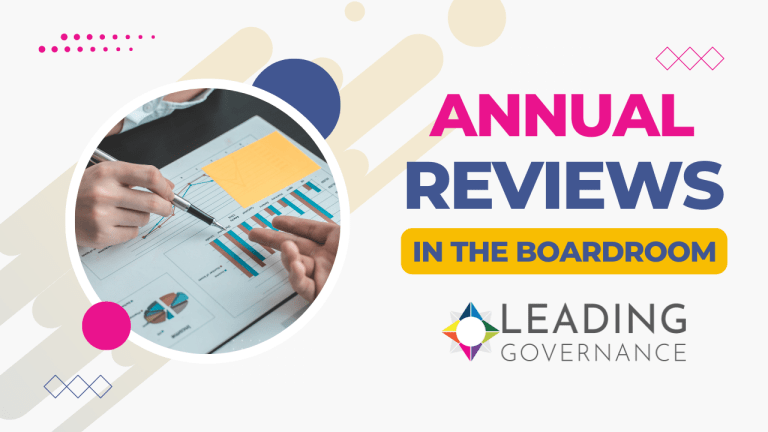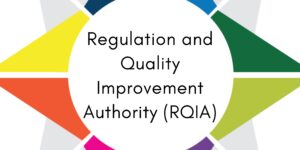In almost all of the governance failures we read about, at least some of the directors are reported to say ‘I didn’t know what I didn’t know’. Perhaps they were unaware of unethical practices by colleagues, a bullying culture in the workplace, or inaccurate information given to the Board or other key stakeholders. The best Boards we know have worked hard to ensure that the information they get provides them with useful facts across all areas of the organisation, so that they really understand what’s going well and what’s not (and the remedial actions being taken) and they feel assured that the controls in place to prevent wrong-doing are working.
10 tips for excellent Board Information
- Timing – provide all information at least a week before the meetings at which it will be considered. The Chair of the Board, as leader of the Board team, can then hold each of the directors accountable for reading, understanding and preparing good questions or views in advance. Papers can be taken as having been read in advance, rather than wasting valuable time with someone reading them out in the meeting.
- Structure – documents should be provided at the same time, in sequence, and with clear numbering to help directors link each to the relevant agenda item.
- Agenda – a well structured agenda should support everyone attending the meeting to know what to expect – how long each agenda item is expected to last, the purpose of the item, who will lead, what information is provided in advance. It should indicate whether each item is for decision, for noting, or for discussion (perhaps in preparation for a decision at a future meeting).
- Cover Sheet for Decision Papers – items requiring a decision from the Board should have a clear Cover Sheet, summarising the proposal, the resource implications (short and long term) and the associated risks (and how they will be managed). The Companies Act 2006 states that directors should take the following into account when making decisions:
- the likely consequences of any decision in the long term
- the interests of the company’s employees
- the need to foster the company’s business relationships with suppliers, customers and others
- the impact of the company’s operations on the community and the environment
- the desirability of the company maintaining a reputation for high standards of business conduct
- the need to act fairly as between members of the company.
This list is not exhaustive but is designed to highlight areas of particular importance to responsible business behaviour. Other relevant factors in the specific context should also be considered (eg the requirements of regulators or other stakeholders). The Cover Sheet should include the key factors, to remind directors to consider them, and to help to shape the minutes of the meeting, to provide lasting evidence that the directors fulfilled their responsibilities and considered all relevant factors before making key decisions.
- Chief Executive’s / Managing Director’s Report – It’s essential that the CEO / MD is entirely open and honest with the Board about what’s going well and what they are concerned about. They should remind the Board of the direction of travel included in the Strategic Plan, and give them a clear picture of the recent past, current position, and foreseeable future. Key successes and concerns should be reported in all areas of the organisation – customers, finance, staffing, leadership and management, emerging opportunities and threats. If there is anything keeping them awake at night, it should be shared rather than concealed.
- Performance Report – it’s not enough to provide a Board with 50 pages of data on any area (including finance and risk). Board reports should be succinct and well structured, in order to really inform the readers. Our preference is for the Balanced Scorecard format, as it balances attention across key areas of the organisation (usually Customer, Resources, Learning and Growth, and Internal Processes). Board members should get a very clear picture of successes, failures and emerging risks, and the report should enable them to prepare good questions and viewpoints in advance (at strategic level rather than becoming too operational). Pie charts, histograms and line graphs can be more easily understood than lengthy paragraphs of words. Performance should be reported clearly against SMART objectives (specific, measurable, achievable, resourced, timebound). Comments should explain remedial action being taken where necessary, and suggest how the plan needs to evolve where performance is above expectations.
- Finance Report – while this should be included in the overall Performance Report (to ensure that it links easily to other areas of reporting) it is essential that it includes clear information on:
- Overall trends in key measures – past, present and predicted future (at year end and beyond)
- Clear cash flow information, as well as management accounts
- Information that links to relevant policies (eg) Reserves Policy, Investment Policy, Remuneration Policy
- Reports from Committees, with draft minutes attached. There are no rules about which Committees a Board must have, but our preference is for Audit and Risk, Nominations, and Remuneration. Those are clearly carrying out Board level work, rather than getting involved in operations. The Performance Report and Internal Audit Report should give clear assurance in key areas of the organisation.
- Reports from Internal Audit – whether this is genuinely internal or ‘bought in’ from an external agency, it should be independent, proportionate to the size and complexity of the organisation, and should be focused on all areas of key risk. The Internal Audit Plan should link to the Compliance Checklist / Calendar in place.
- Minutes of the last meeting – the minutes should show the date of the meeting, the names of those present, and managers, staff and advisers ‘in attendance’, apologies for Board members unable to be in the meeting, and conflicts of interest (and actions taken in relation to them), start and end times. For each item, there should be a clear account given of the decisions made (with the factors considered and advice taken) and actions agreed. While the minutes don’t need to record every conversation in the meeting, they should provide a clear audit trail which enables anyone reading them (up to 10 years later) to understand the Board’s decision making processes.
Greats news! Applications are now open for our accredited course – Boardroom Leadership in the 21st Century. In response to demand from clients over the years, Leading Governance Ltd is delighted to offer this unique accredited course for Board Members, which will be delivered by Zoom from January to April 2022. Apply here.
Did you know?
You can join the Leading Governance website as a member? Members get access to thousands of pounds worth of essential Governance materials to build their own Governance Manuals, from Sample Board Agendas to Board Member Review templates and much more (see our video here)! Click here to see more about Membership and join our community.
See more of our recent blog posts below!
Sample Policy on Board Only meetings
Commitment Our Board and Senior Leadership Team are fully committed to the continual improvement of governance and boardroom leadership. Together, we have developed this policy







